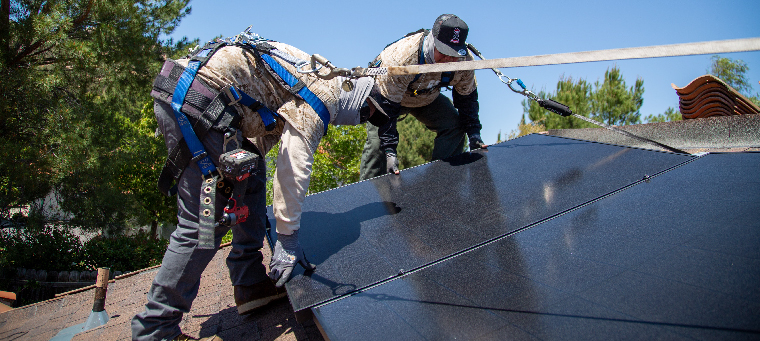




On 14 days during March, Arizona utilities got a gift from California: free solar power.
Well, actually better than free. California produced so much solar power on those days that it paid Arizona to take excess electricity its residents weren’t using to avoid overloading its own power lines.
It happened on eight days in January and nine in February as well. All told, those transactions helped save Arizona electricity customers millions of dollars this year, though grid operators declined to say exactly how much. California has also has paid other states to take surplus solar power.
The number of days that California dumped its unused solar electricity would have been even higher if the state hadn’t ordered some solar plants to reduce production — even as natural gas power plants, which contribute to greenhouse gas emissions, continued generating electricity.
Solar and wind power production was curtailed a relatively small amount — about 3% in the first quarter of 2017 — but that’s more than double the same period last year. And the surge in solar power could push the number even higher in the future.
Why doesn’t California, a champion of renewable energy, use all the solar power it can generate?
The answer, in part, is that the state has achieved dramatic success in increasing renewable energy production in recent years. But it also reflects sharp conflicts among major energy players in the state over the best way to weave these new electricity sources into a system still dominated by fossil-fuel-generated power.
No single entity is in charge of energy policy in California. This has led to a two-track approach that has created an ever-increasing glut of power and is proving costly for electricity users. Rates have risen faster here than in the rest of the U.S., and Californians now pay about 50% more than the national average.
Perhaps the most glaring example: The California Legislature has mandated that one-half of the state’s electricity come from renewable sources by 2030; today it’s about one-fourth. That goal once was considered wildly optimistic. But solar panels have become much more efficient and less expensive. So solar power is now often the same price or cheaper than most other types of electricity, and production has soared so much that the target now looks laughably easy to achieve.
A key question in the debate is when California will be able to rely on renewable power for most or all of its needs and safely phase out fossil fuel plants, which regulators are studying.
The answer depends in large part on how fast battery storage improves, so it is cheaper and can store power closer to customers for use when the sun isn’t shining. Solar proponents say the technology is advancing rapidly, making reliance on renewables possible far sooner than previously predicted, perhaps two decades or even less from now — which means little need for new power plants with a lifespan of 30 to 40 years.